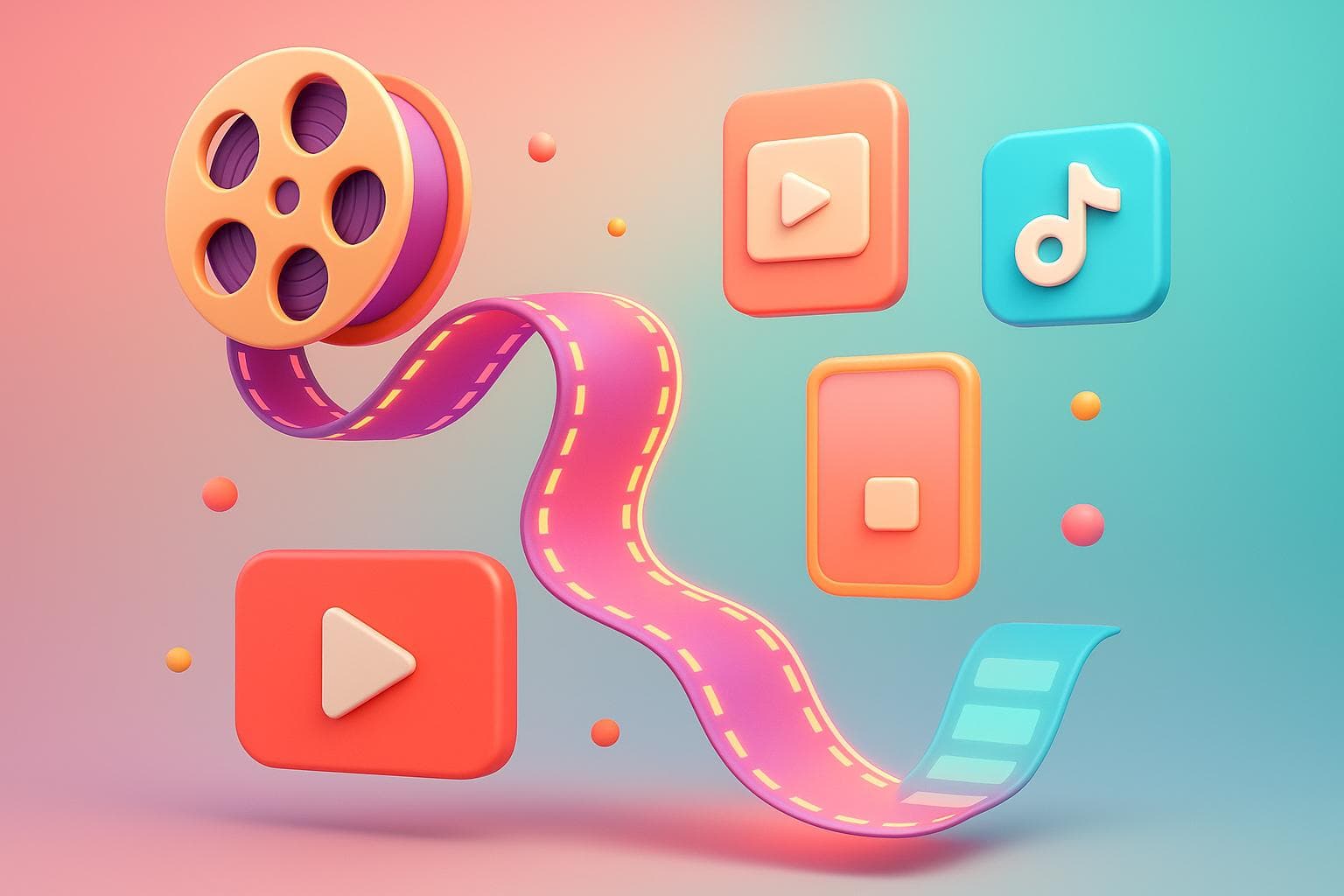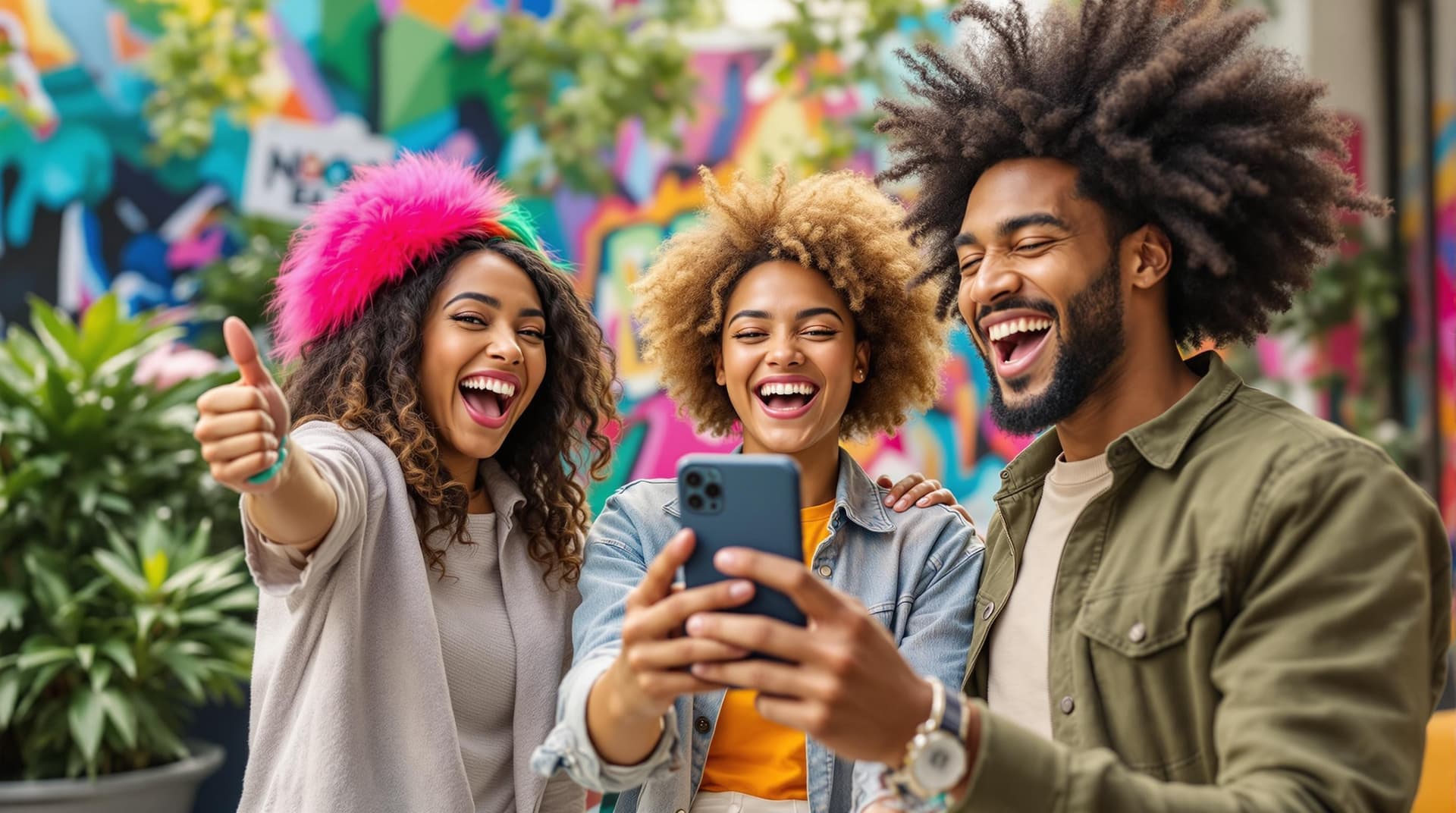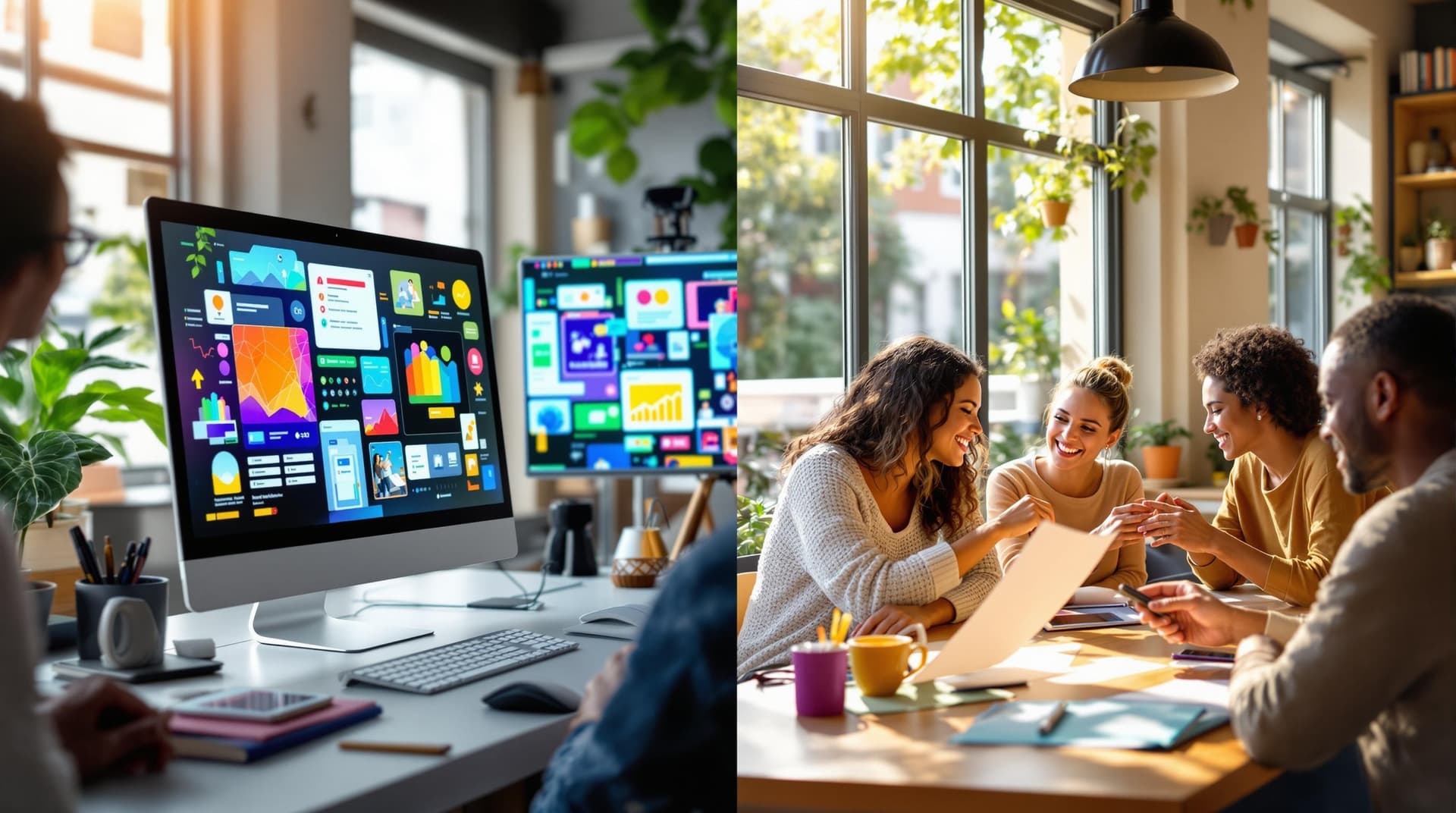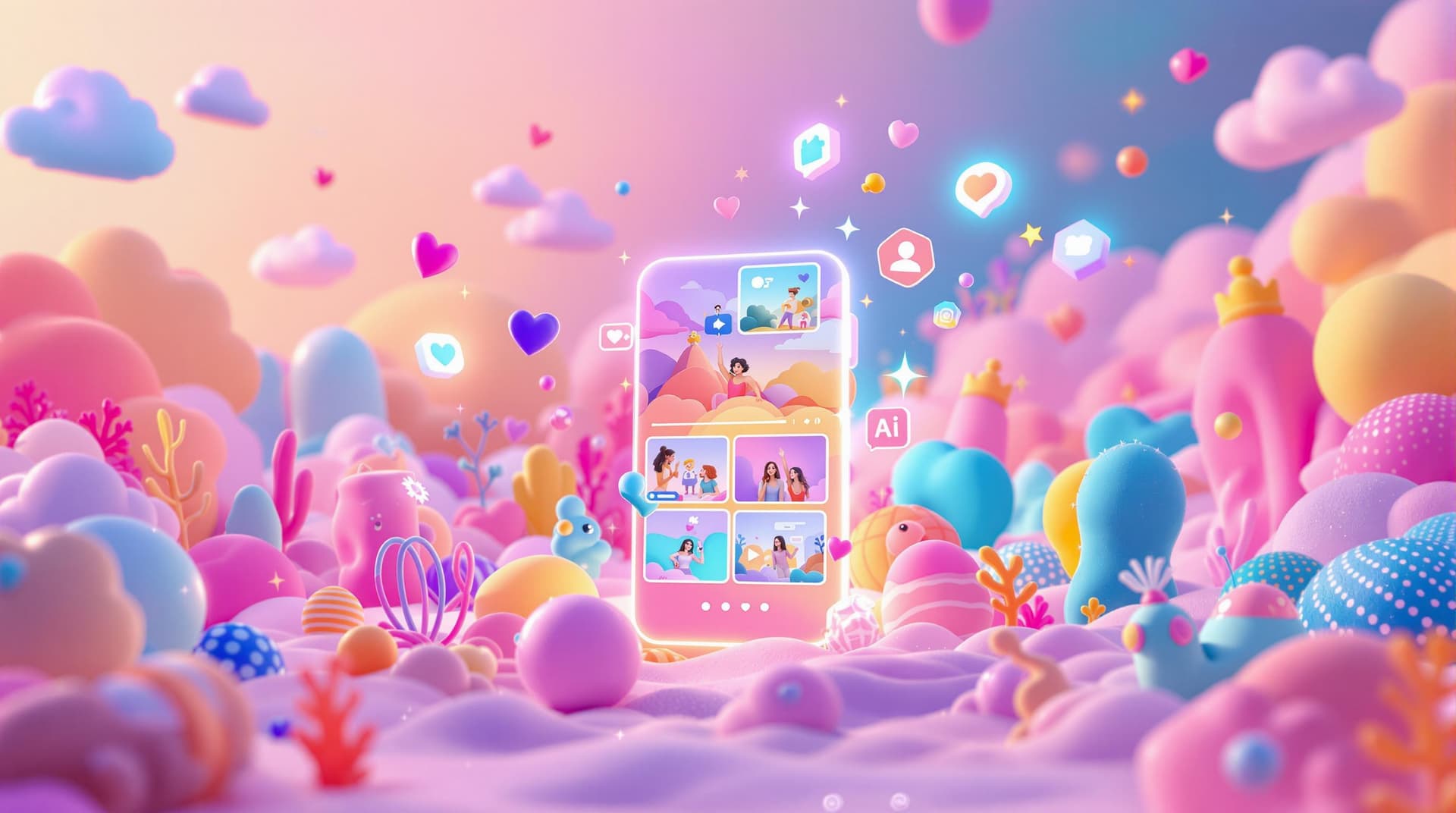Table of contents
- How I Cut My Video Creation Time in HALF Using AI!
- How AI Changes Video Length Adjustment
- 1. Smart Cropping for Platform Formats
- 2. Automated Scene Detection and Highlight Extraction
- 3. AI-Powered Trimming and Filler Removal
- 4. Dynamic Video Length Optimization Based on Platform Trends
- 5. Template-Based Multi-Platform Adaptation
- Comparison Table
- Conclusion
- FAQs

Getting videos to the right length for different platforms is hard work. AI makes it easier by automating the process. Here's how:
- Smart Cropping: AI resizes videos for platforms like TikTok (9:16) or YouTube (16:9) while keeping key visuals in focus.
- Scene Detection: It identifies the best moments, skipping the need to scrub through hours of footage.
- Trimming & Filler Removal: Removes pauses, filler words, and distractions for smoother videos.
- Dynamic Length Optimization: Adjusts video length based on platform trends and viewer preferences.
- Template-Based Editing: Uses pre-designed templates to format videos for multiple platforms in one go.
AI tools like MagicUGC are leading the charge, saving time and helping creators produce polished, platform-ready videos faster than ever.
How I Cut My Video Creation Time in HALF Using AI!
How AI Changes Video Length Adjustment
AI has revolutionized how content creators optimize video length, turning a time-consuming manual process into an efficient, automated one. By analyzing key factors like video content, platform-specific requirements, and audience engagement patterns, AI makes precise editing decisions that save creators both time and effort. Let’s break down how this transformative technology works.
At the core of this automation are advanced techniques like computer vision, natural language processing, and deep learning. Specifically, systems using Convolutional Neural Networks (CNNs) and Long Short-Term Memory (LSTM) networks extract both frame-by-frame details and temporal patterns from videos. This allows AI to pinpoint the most engaging moments and seamlessly weave them into the final cut. For example, algorithms can break a video into frames and use tools like ResNet50 for similarity matching, identifying which scenes resonate most with viewers and which can be trimmed without losing the essence of the message.
"We disentangle the challenge of trying to encode spatial and temporal information all at once and instead think about it like two experts working on their own, which turns out to be a more explicit way to encode the information. Our model, which combines these two separate branches, leads to the best performance." - Brian Chen, Lead Author
AI also handles the tricky task of meeting platform-specific requirements. Social media platforms have varying specifications for video formats, durations, and aspect ratios. AI tools not only store these specifications but also adjust videos automatically to fit each platform’s needs. This ensures maximum audience engagement without requiring manual resizing or reformatting. For instance, AI Video Cut uses smart cropping to keep key elements in the frame while filling empty spaces with blurred backgrounds or color-matched extensions, offering presets tailored for platforms like Instagram and TikTok.
In the world of social media marketing, AI has become indispensable. With 35.1% of marketers already incorporating AI into their content production workflows, it’s clear this technology is no longer optional. AI-driven video summarization tools, for example, achieve impressive metrics - 79.2% precision, 86.5% recall, and an 83% F-score - creating condensed versions of videos that retain the core message while being roughly one-fifth the original length.
MagicUGC is a prime example of how AI is shaping content creation. By training its models on over 1 million successful Instagram and TikTok videos, it identifies the optimal lengths and formats for different platforms. The tool then generates multiple variations of a video, each tailored to specific audience preferences, simplifying workflows and boosting engagement.
Another major advantage is speed. Modern AI tools can analyze hours of footage in minutes, completing tasks three to five times faster than traditional methods. This efficiency allows creators and marketing teams to focus on strategy and storytelling rather than getting bogged down in tedious editing processes.
1. Smart Cropping for Platform Formats
Smart cropping is a game-changer in video editing, using AI to adapt videos for different social media platforms. It doesn’t just resize content - it ensures that the most important parts of your video stay front and center.
Platform-Specific Optimization
Every social media platform has unique video format requirements that can influence how well your content performs. For instance, platforms like TikTok and Instagram Reels thrive on vertical videos with a 9:16 aspect ratio, while YouTube favors horizontal videos with a 16:9 ratio. AI-powered cropping tools simplify this by offering pre-set aspect ratios tailored to platforms like TikTok, Instagram, and YouTube. Uploading a horizontal video? These tools can automatically reframe it to match the platform’s preferred display format.
What sets advanced systems apart is their ability to use trend data and audience insights to fine-tune your video for maximum impact on each platform. This ensures your content isn’t just formatted correctly - it’s optimized to connect with viewers.
Maintaining Content and Focus
The true challenge in smart cropping is retaining the essence of the video while adjusting its dimensions. AI tools analyze the footage, identifying the most critical elements to keep the message intact. For example:
"Cloudinary has developed a complex deep-learning algorithm that analyzes frames from the video and identifies where the most interesting areas are. From this analysis, a heatmap is produced and then used to crop the video intelligently."
These tools use content-aware cropping to highlight the key visual elements while maintaining the overall visual appeal. Some even take it a step further with dynamic cropping - also known as motion tracking - which follows the subject’s movement to keep them centered throughout the video.
Saving Time in Editing
Smart cropping isn’t just about precision; it’s also about efficiency. By automating tasks like detecting and centering main subjects, these tools free up creators to focus on storytelling and strategy, cutting down the time spent on manual edits.
Boosting Audience Engagement
Platform-specific videos aren’t just nice to have - they’re essential. Optimized videos can increase brand awareness by 27% and message impact by 23% compared to generic formats. Consider this: 93% of Twitter video views happen on mobile devices, and 85% of Facebook users watch videos without sound. Proper formatting ensures your content fits these behaviors, whether it’s TikTok’s quick, trendy clips or YouTube’s longer, detailed videos. By aligning with platform-specific viewer habits, tailored videos naturally drive higher engagement.
MagicUGC integrates smart cropping into its broader video optimization process. Drawing insights from over 1 million high-performing videos, it creates platform-specific versions of your content, ensuring each one resonates with its intended audience and viewing context.
2. Automated Scene Detection and Highlight Extraction
Once your video format is fine-tuned with smart cropping, AI takes it a step further by identifying the standout moments within your footage. Automated scene detection zeroes in on key transitions and highlights, saving you from the tedious task of manually scrubbing through hours of content.
Efficiency in Video Editing
AI simplifies the editing process by automatically spotting scene transitions, giving creators more time to focus on crafting their narrative. This technology eliminates the need for manual scene identification, significantly boosting productivity. Many professionals in the industry have noted substantial time savings and workflow improvements after incorporating AI-driven scene detection into their editing toolkit.
Keeping the Content Intact
AI doesn't just cut footage - it does so with purpose. By analyzing patterns and understanding the tone of the content, AI ensures the most important parts are preserved. It indexes video, audio, and metadata to generate highlights up to seven times faster. Additionally, it can track faces and objects within the footage, ensuring that key subjects stay in focus while adapting the content for various platforms.
Tailored for Each Platform
Every social media platform has its own vibe and pacing, and AI is smart enough to adapt. It analyzes your video to recommend scenes that will resonate with specific audiences, helping you tailor content for maximum engagement. For instance, a TikTok highlight reel might feature quick cuts and high energy, while a YouTube version could lean toward a slower, more detailed flow. With AI already influencing 69% of global ad revenue - and projections suggesting it will reach 94% by 2029 - this technology is shaping the future of video marketing.
Boosting Viewer Engagement
By delivering the most engaging parts of your video, automated scene detection keeps your audience hooked. It categorizes scenes based on relevance, helping creators maintain viewer attention from start to finish. Tools like MagicUGC take this even further, analyzing over 1 million high-performing videos to identify the best moments in your content. These insights are then used to create platform-specific highlights, ensuring your videos hit the mark with every audience. This process works hand-in-hand with earlier optimization techniques, guaranteeing your content stands out on any platform.
3. AI-Powered Trimming and Filler Removal
AI doesn’t just find your best scenes - it takes things a step further by removing awkward pauses, filler words, and unnecessary content. The result? Polished, professional-looking videos that flow naturally. This goes beyond simple cuts; the technology analyzes your speech patterns and overall content flow to deliver seamless edits.
Efficiency in Video Editing
Editing video content can be a time-consuming task, especially when it comes to removing filler words and awkward pauses. AI simplifies this process by automatically identifying and cutting out these distractions. Instead of spending hours manually scrubbing through footage, creators can rely on AI to handle the heavy lifting.
"Descript identifies frequent filler words like 'um,' 'uh,' 'like,' 'you know,' 'so,' and 'actually.' These can be removed in seconds, making your videos more engaging."
This automation can reduce editing time by up to 90%, freeing up creators to focus on crafting their message. Some tools even offer text-based editing, allowing users to make precise cuts directly from video transcripts. The result is an efficient workflow that delivers professional results without sacrificing the natural feel of the content.
Content Preservation
AI-powered trimming isn’t just about cutting - it’s about enhancing. The technology ensures that while filler words and awkward pauses are removed, the natural flow of your video remains intact. It carefully evaluates the context surrounding each edit, so the final product feels smooth and unforced.
"Visla's AI technology allows you to automatically remove unnecessary filler phrases such as 'um' and 'ah' from your speech, making it more fluent and polished."
By factoring in elements like tone, pacing, and key phrases, AI ensures your delivery retains its authenticity. Important pauses and natural rhythms are preserved, keeping your content engaging and true to your voice.
Audience Engagement Improvement
Clean, distraction-free videos are more likely to hold your audience’s attention. By analyzing viewer engagement and retention data, AI helps pinpoint edits that maximize impact. This keeps viewers hooked and encourages longer watch times. Plus, shorter, more concise videos tend to perform better in terms of shares - content under two minutes is shared 50% more frequently than longer videos.
These AI-driven refinements not only make your videos more enjoyable to watch but also increase their potential for wider reach and engagement across platforms.
Platform-Specific Optimization
AI doesn’t just streamline editing - it also tailors videos for specific platforms. Each platform has its own style and pacing preferences, and AI adapts trimming techniques accordingly. For example, while a YouTube video might allow for more natural pauses, TikTok and Instagram Reels thrive on fast, punchy pacing.
The technology can also resize and optimize videos for formats like TikTok, Instagram Reels, and YouTube Shorts. MagicUGC, for instance, uses data from over 1 million videos to fine-tune edits for platform-specific demands. Whether it’s quick-scroll feeds or longer viewing sessions, AI ensures your content hits the right rhythm for its intended audience.
sbb-itb-d822133
4. Dynamic Video Length Optimization Based on Platform Trends
AI has taken video editing to the next level by not only detecting and trimming scenes but also adapting to real-time platform trends. By monitoring what’s popular and adjusting video lengths accordingly, AI ensures your content stays relevant to shifting viewer preferences and platform algorithms. This approach builds on earlier editing advancements to fine-tune videos for maximum impact across different audiences.
Platform-Specific Optimization
Once AI identifies general trends, it gets even more precise by tailoring videos to the unique requirements of individual platforms. TikTok, Instagram, and YouTube all have distinct preferences when it comes to video length, and AI tracks these in real time. For instance, TikTok demands instant engagement within the first 3 seconds, while YouTube prioritizes videos that hold over 60% audience retention in the first 8 seconds.
By analyzing metrics like view counts, engagement rates, and social mentions, AI determines the ideal length for your content and audience. Trending videos, which often achieve engagement rates 3 to 5 times higher than average, serve as benchmarks for these adjustments.
Boosting Audience Engagement
Optimizing video length is crucial for keeping viewers hooked. AI focuses on those critical early moments - when up to 65% of viewers may drop off - to adjust pacing and maintain interest. Videos that gain traction quickly, especially within the first 48 hours, are 70% more likely to trend. Similarly, short-form videos with an 85% retention rate are almost twice as likely to go viral.
AI also factors in generational preferences. For example, a 2025 study revealed that shortening educational content from 10 minutes to 90 seconds improved recall by 22% among Gen Z viewers, though it reduced retention of more complex ideas by 41%. These insights allow for the creation of tailored edits that balance engagement with content depth.
Preserving Content Quality
While optimizing length, AI ensures the essence of your content remains intact. It identifies the most engaging segments of longer videos and converts them into compelling short clips. Videos featuring frequent scene changes see a 32% increase in retention compared to static-shot videos, and AI uses this knowledge to maintain a natural storytelling flow. When presented in video format, viewers retain up to 95% of the message - making effective editing even more impactful.
Streamlining the Editing Process
Dynamic optimization doesn’t just enhance your content - it also simplifies the editing process. AI automatically generates platform-specific versions of your videos, saving you from the hassle of creating separate edits for TikTok, Instagram, and YouTube. Predictive analytics enable AI to produce optimized versions quickly, ensuring your content stays ahead of emerging trends.
Tools like MagicUGC exemplify this efficiency, drawing on data from over 1 million high-performing videos to guide optimization decisions. By recognizing proven patterns, these platforms automate the creation of platform-ready content, maximizing engagement across all your social media channels with minimal manual effort.
5. Template-Based Multi-Platform Adaptation
Once video length is fine-tuned through cropping and trimming, AI template systems step in to handle the next phase: adapting content seamlessly for various platforms. These systems use customizable templates to automatically tailor videos for multiple networks, combining advanced AI insights with a standardized approach. This process simplifies everything from adjusting aspect ratios to optimizing for audience interaction - no manual effort required. By leveraging automation, template-based adaptation makes creating platform-ready videos faster and more efficient.
Platform-Specific Optimization
AI templates do more than just resize videos; they adapt content to meet the unique needs of each platform. These templates embed the specific technical and creative requirements of various networks, generating optimized versions automatically. Whether it's TikTok, Instagram, or YouTube, the system ensures your videos are formatted correctly and align with each platform's standards, eliminating the hassle of manual adjustments.
Efficiency in Video Editing
Using structured AI templates can significantly cut down on production time. In fact, organizations report a 62% reduction in content creation time compared to traditional workflows. This efficiency comes from automating repetitive tasks and standardizing the optimization process across platforms.
"We implemented AI templates across our marketing department last quarter and saw our content production increase by 78% while reducing editing cycles by half."
- Marketing director at a Fortune 500 technology company
Templates also offer customizable features like text effects and access to stock media, allowing for quick personalization and publication. This balance between automation and flexibility ensures you can adapt content swiftly without sacrificing creativity.
Content Preservation
One of the standout benefits of template-based systems is their ability to preserve your content's core message while adapting it for different platforms. These templates are designed to maintain brand consistency by embedding your brand’s messaging and visual identity directly into the framework. This ensures that your tone, style, and branding stay consistent, whether you're creating short, snappy TikTok videos, visually polished Instagram posts, or longer YouTube content. By automating this process, templates eliminate the inconsistencies that can arise with manual adaptations, helping reinforce brand recognition and trust across your audience.
Audience Engagement Improvement
Templates don’t just save time - they also boost engagement. By analyzing millions of high-performing videos, these systems are designed to include engagement triggers specific to each platform’s audience behavior. Over 65% of marketers now use AI-assisted tools in their content creation, with templates being one of the most popular choices.
Take MagicUGC, for example. This platform trains its AI video generation models on a massive dataset of over 1 million successful Instagram and TikTok videos. By doing so, it creates templates that incorporate proven strategies for capturing audience attention. These systems also support rapid testing and iteration, helping you monitor performance, spot trends, and continually refine your approach to improve viewer engagement. With this kind of insight, your content doesn’t just meet platform standards - it connects with your audience.
Comparison Table
Here's a breakdown of key AI techniques for optimizing video length, highlighting their strengths across different aspects:
| AI Technique | Platform Optimization | Content Preservation | Efficiency | Audience Engagement |
|---|---|---|---|---|
| Smart Cropping | Excellent – Automatically adjusts aspect ratios for TikTok (9:16), Instagram (1:1, 9:16), and YouTube (16:9) | Good – Keeps the visual focus intact while trimming peripheral content | High – Quickly converts formats with minimal processing time | Strong – Delivers a seamless viewing experience across devices |
| Scene Detection & Highlights | Very Good – Identifies key moments based on engagement patterns for each platform | Excellent – Extracts essential scenes to retain the core message | Very High – Condenses lengthy footage into short, impactful highlights | Excellent – Focuses on high-retention moments |
| Trimming & Filler Removal | Good – Produces cleaner, fast-paced content tailored for specific platforms | Very Good – Preserves narrative flow while cutting unnecessary parts | Excellent – Saves significant editing time compared to manual workflows | Very Good – Removes dead air to maintain viewer interest |
| Dynamic Length Optimization | Excellent – Adjusts to real-time platform trends and algorithm preferences | Good – May sacrifice some depth for an ideal length | High – Automatically adapts using performance insights | Excellent – Aligns with platform-specific engagement patterns |
| Template-Based Adaptation | Excellent – Meets multiple platform requirements simultaneously using embedded standards | Excellent – Ensures brand consistency across all formats | Excellent – Automates multi-format production | Very Good – Provides reliable and uniform results |
Each technique shines in different areas, catering to diverse content needs:
- Smart Cropping is ideal for technical precision, ensuring compatibility across platforms.
- Scene Detection & Highlights excels at preserving the core message by focusing on key moments.
- Trimming & Filler Removal eliminates distractions, creating concise and engaging content.
- Dynamic Length Optimization is perfect for adapting to platform trends and maximizing reach.
- Template-Based Adaptation simplifies multi-platform production while maintaining brand consistency.
For creators prioritizing message quality and scalability, combining Scene Detection with Template-Based Adaptation is a strong choice. On the other hand, if staying ahead of platform trends is your goal, pairing Dynamic Length Optimization with Smart Cropping can deliver great results. By mixing and matching these techniques, you can tailor your approach to meet your objectives and ensure your content resonates across platforms.
Conclusion
AI-driven video length adjustment is transforming how social media content is created. By automating the intricate process of tailoring videos to fit various platforms, this technology eliminates the need for tedious manual editing and reformatting. It ensures that each piece of content is fine-tuned to meet platform-specific requirements, saving time and effort while boosting performance.
These advancements lead to tangible improvements in audience engagement. With viewer retention dropping below 50% for videos over two minutes long and video expected to account for 82% of all internet traffic by 2025, automated trimming plays a critical role in keeping viewers engaged and maximizing impact .
A great example of this technology in action is MagicUGC. This platform, trained on over 1 million high-performing Instagram and TikTok videos, automates video production by handling edits and adjustments seamlessly. It streamlines the process while maintaining the level of quality and engagement required to deliver results.
The five AI techniques - smart cropping, scene detection, trimming, dynamic optimization, and template adaptation - work together to ensure videos maintain technical accuracy, stay true to their content, and connect with audiences effectively.
For brands and creators aiming to scale their video content, AI-powered tools offer an ideal mix of efficiency, precision, and creative support. As David Raichman, creative director at Ogilvy, aptly states, AI acts as "a force multiplier for creative expression", allowing creators to focus on their message while the technology handles the heavy lifting of platform-specific optimization.
FAQs
How does AI decide the best video length for social media platforms?
AI figures out the best video length by digging into metrics like watch time, engagement rates, and completion rates. It uses this data to align with what each platform's audience prefers, making sure content hits the mark on platforms like TikTok, Instagram, and YouTube.
For instance, AI might reveal that quick, punchy videos thrive on TikTok, while YouTube audiences tend to favor longer, more in-depth content. By tapping into these insights, creators and brands can boost viewer retention and keep audiences engaged across various platforms.
What are the key advantages of using AI for video editing over traditional methods?
AI-powered video editing brings speed, cost efficiency, and time-saving automation to the table. Unlike older editing methods, AI takes care of repetitive tasks - like trimming clips, resizing for different platforms, or adding captions - quickly and effortlessly. This leaves more room to focus on the creative aspects of production.
What’s more, AI tools can analyze trends specific to platforms like TikTok, Instagram, and YouTube, tailoring videos to maximize engagement and performance. For brands and creators aiming to produce polished, professional content without wasting time, AI is a game-changer.
Can AI tools like MagicUGC adapt videos for different platforms without losing the original message?
AI tools such as MagicUGC make it simple to adapt your video content for platforms like TikTok, Instagram, and YouTube while keeping your core message intact. These tools handle adjustments to video length, format, and style automatically, ensuring your content meets the unique requirements of each platform.
The result? You can easily create content that connects with each platform’s audience and drives engagement, all without losing the original purpose or tone of your video.



